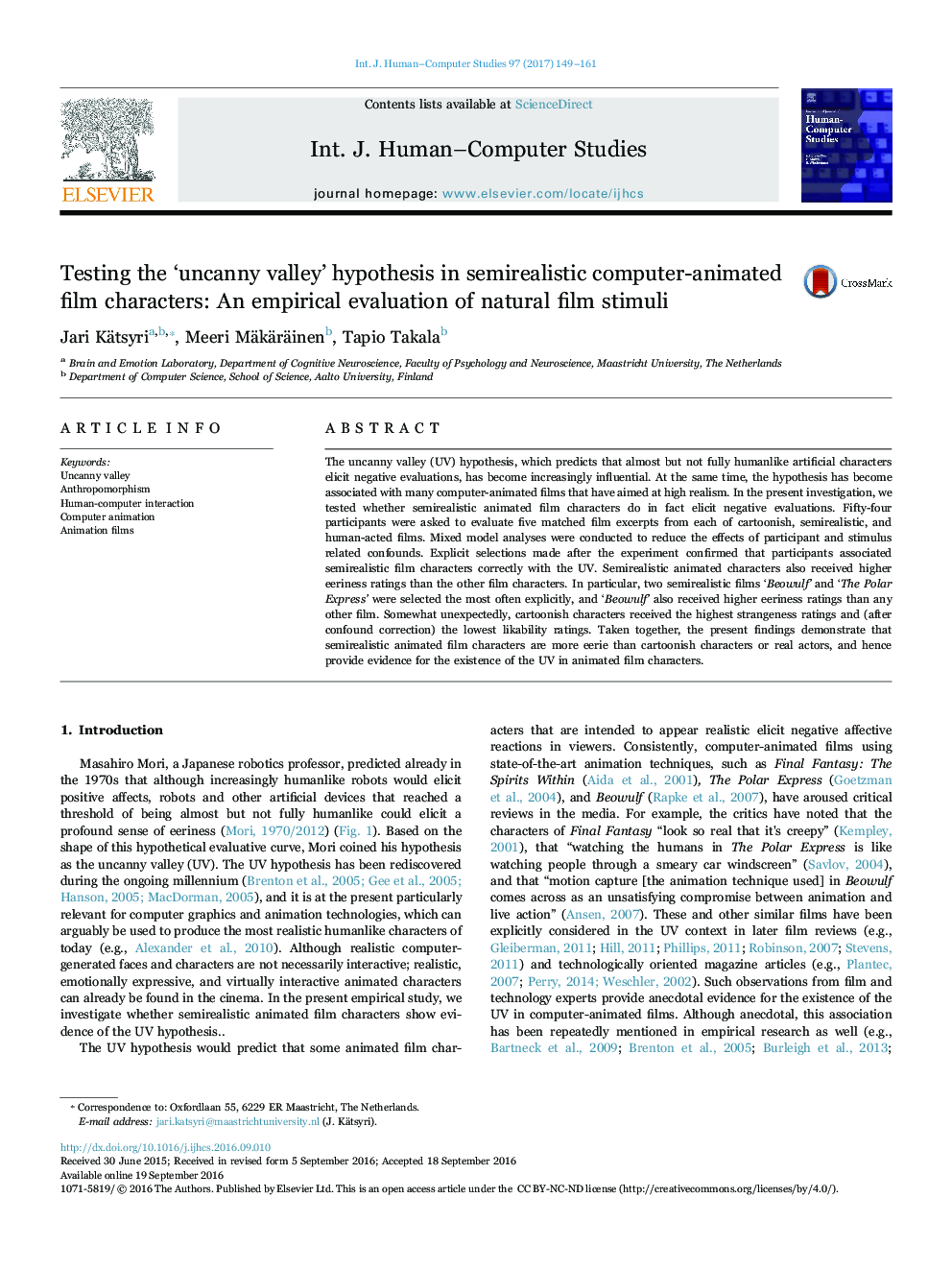| Article ID | Journal | Published Year | Pages | File Type |
|---|---|---|---|---|
| 4945875 | International Journal of Human-Computer Studies | 2017 | 13 Pages |
â¢The Uncanny Valley (UV) hypothesis is tested with natural film stimuli.â¢Film stimuli are taken from cartoonish, semirealistic, and human-acted films.â¢Semi-realistic animations are rated more eerie than other film types.â¢'The Polar Express' and 'Beowulf' films are associated explicitly with UV.
The uncanny valley (UV) hypothesis, which predicts that almost but not fully humanlike artificial characters elicit negative evaluations, has become increasingly influential. At the same time, the hypothesis has become associated with many computer-animated films that have aimed at high realism. In the present investigation, we tested whether semirealistic animated film characters do in fact elicit negative evaluations. Fifty-four participants were asked to evaluate five matched film excerpts from each of cartoonish, semirealistic, and human-acted films. Mixed model analyses were conducted to reduce the effects of participant and stimulus related confounds. Explicit selections made after the experiment confirmed that participants associated semirealistic film characters correctly with the UV. Semirealistic animated characters also received higher eeriness ratings than the other film characters. In particular, two semirealistic films 'Beowulf' and 'The Polar Express' were selected the most often explicitly, and 'Beowulf' also received higher eeriness ratings than any other film. Somewhat unexpectedly, cartoonish characters received the highest strangeness ratings and (after confound correction) the lowest likability ratings. Taken together, the present findings demonstrate that semirealistic animated film characters are more eerie than cartoonish characters or real actors, and hence provide evidence for the existence of the UV in animated film characters.
